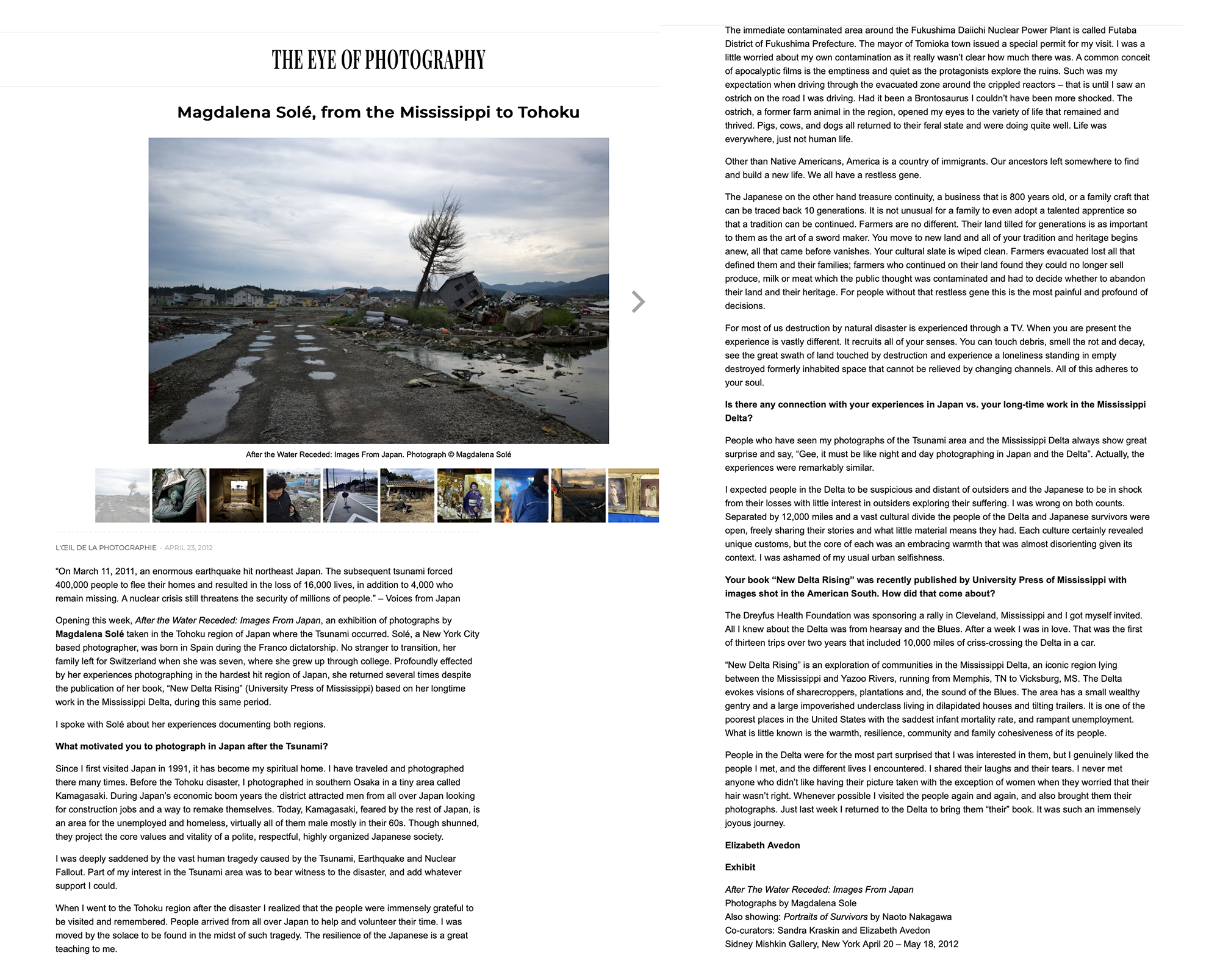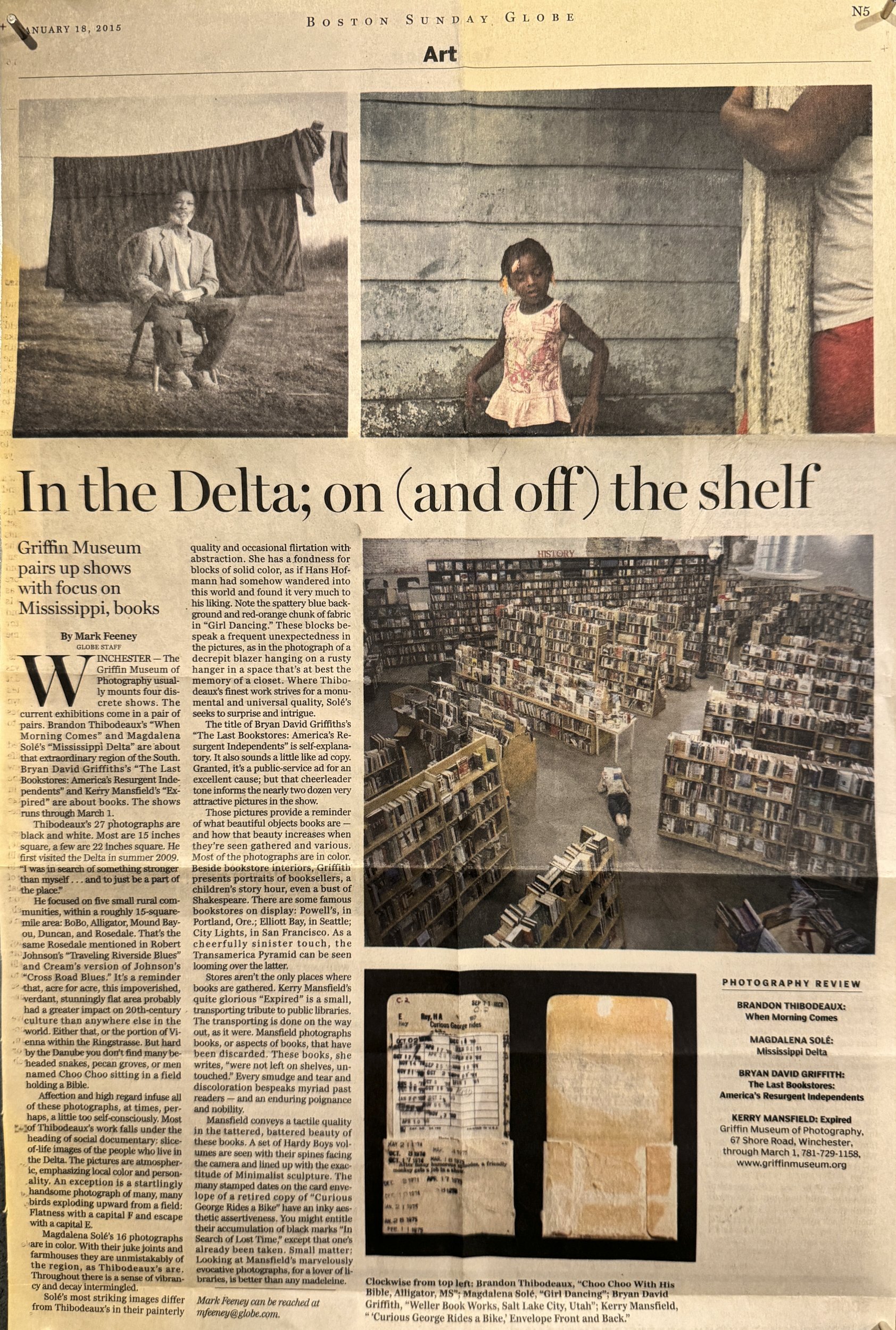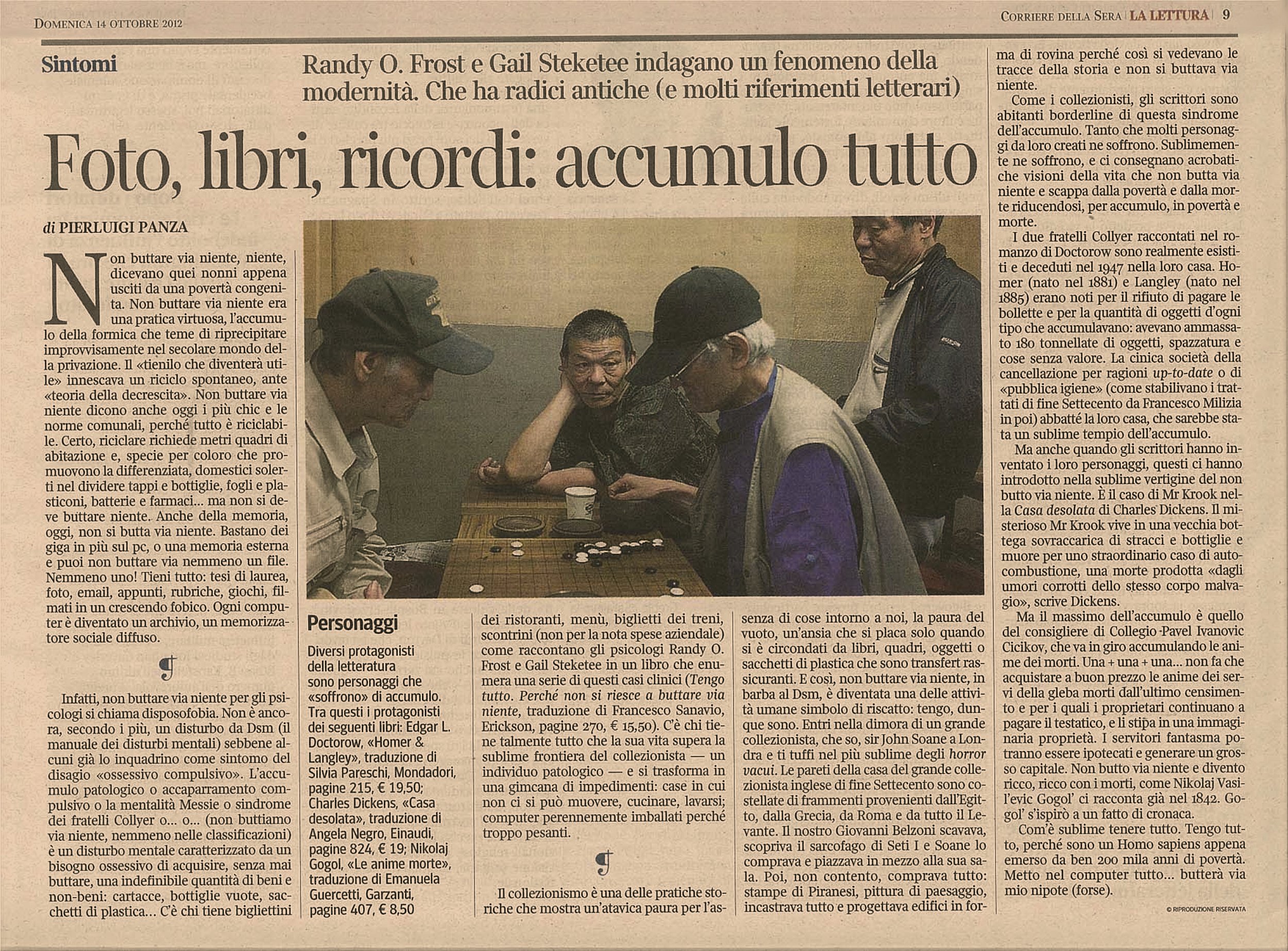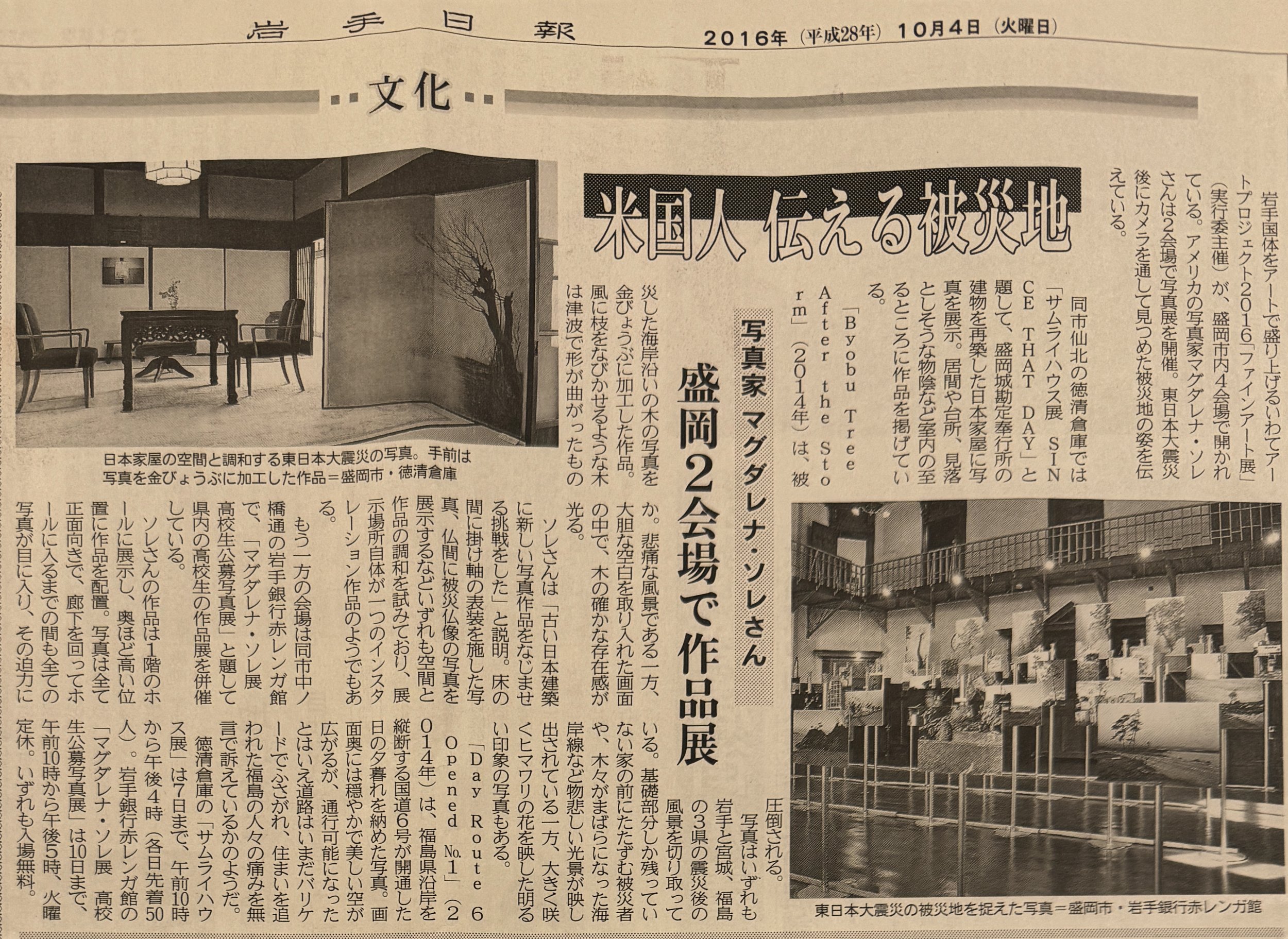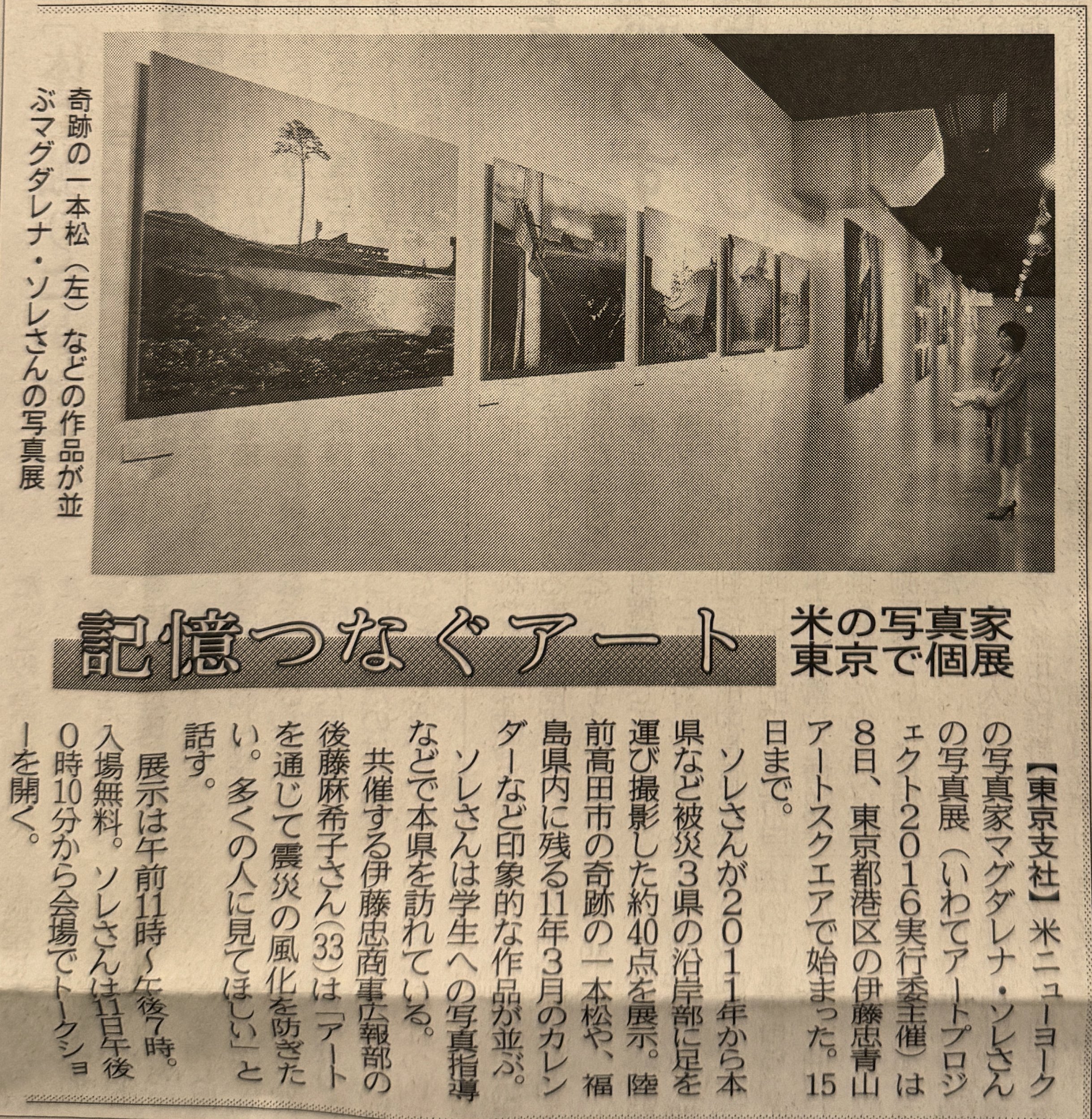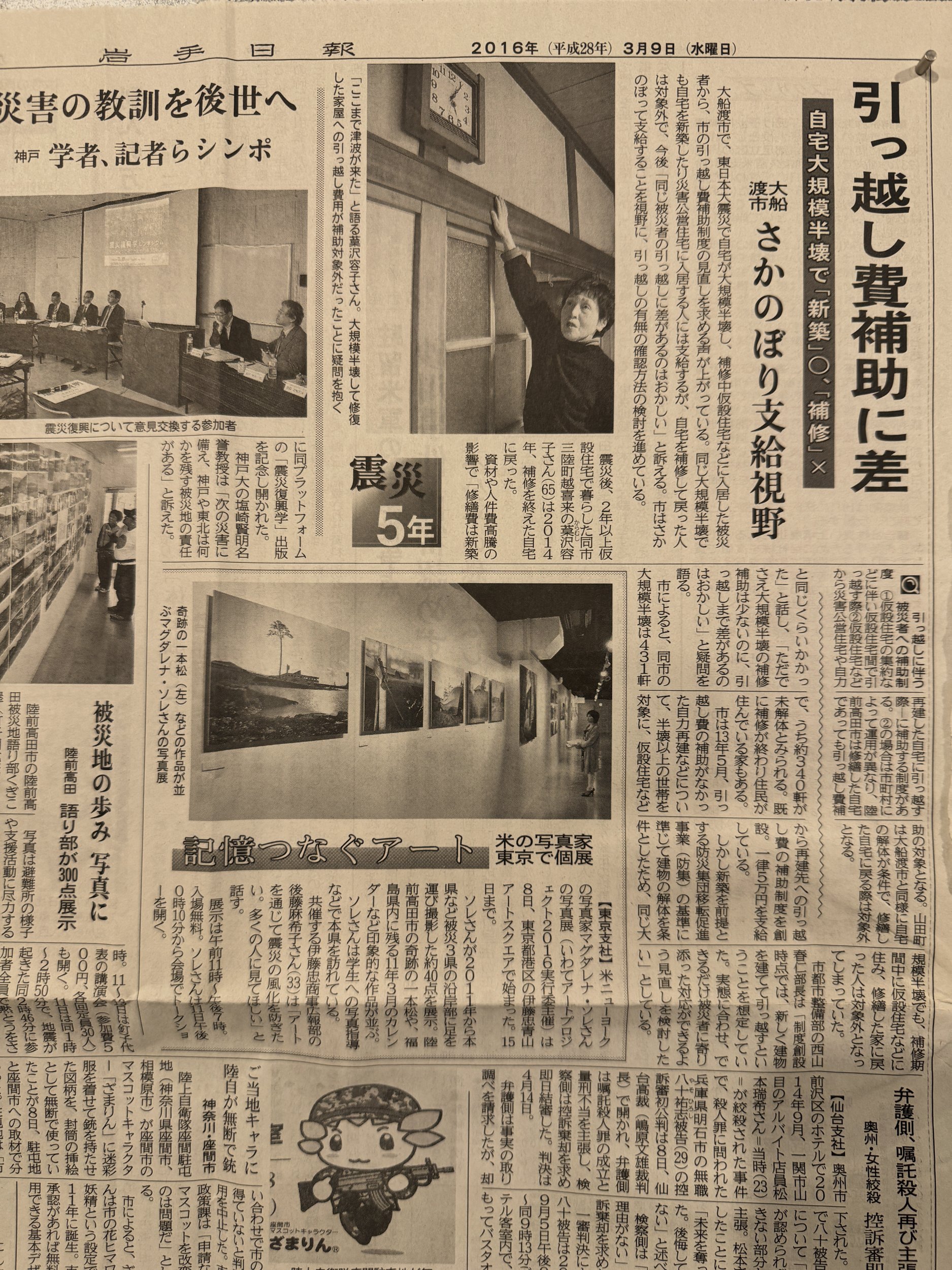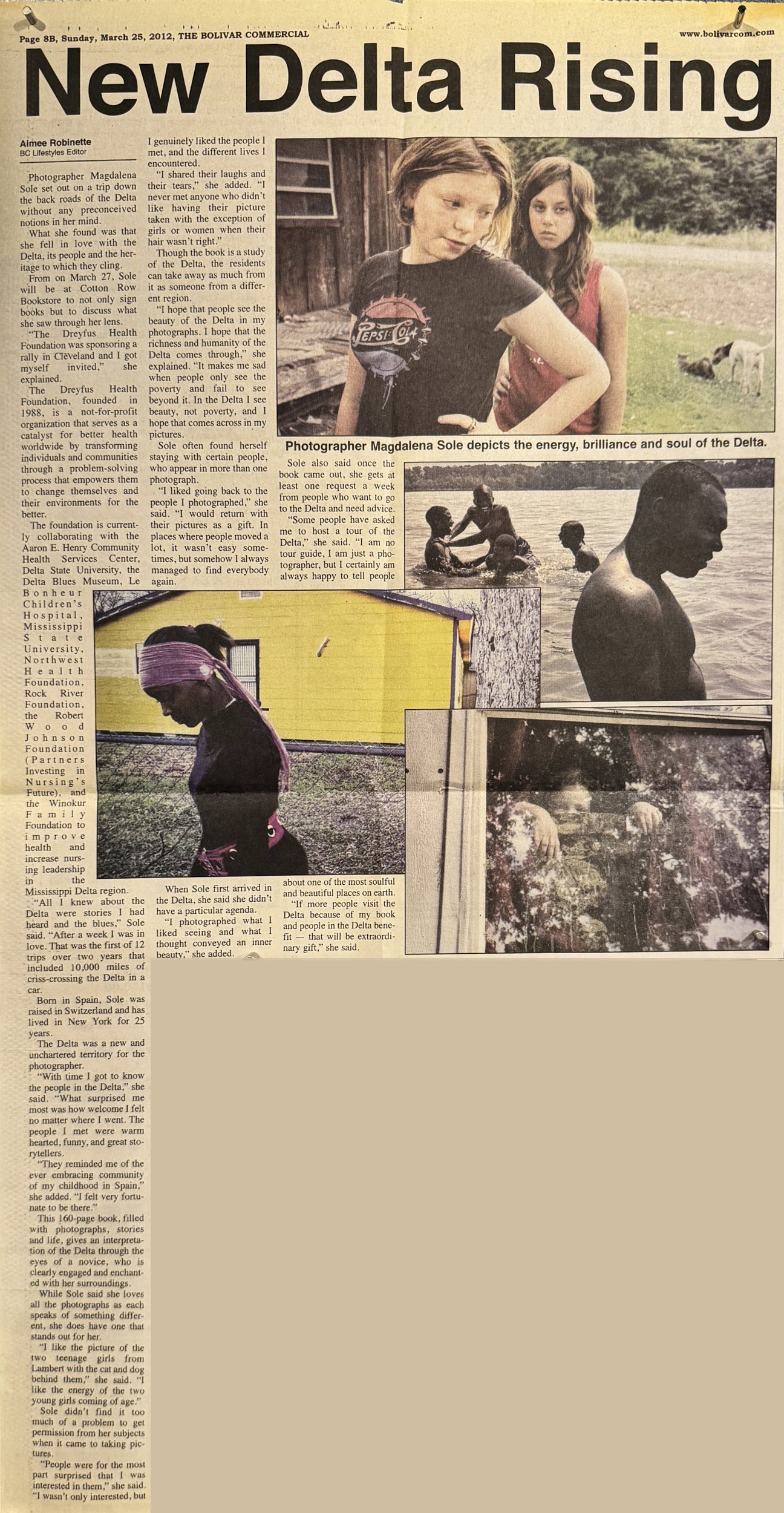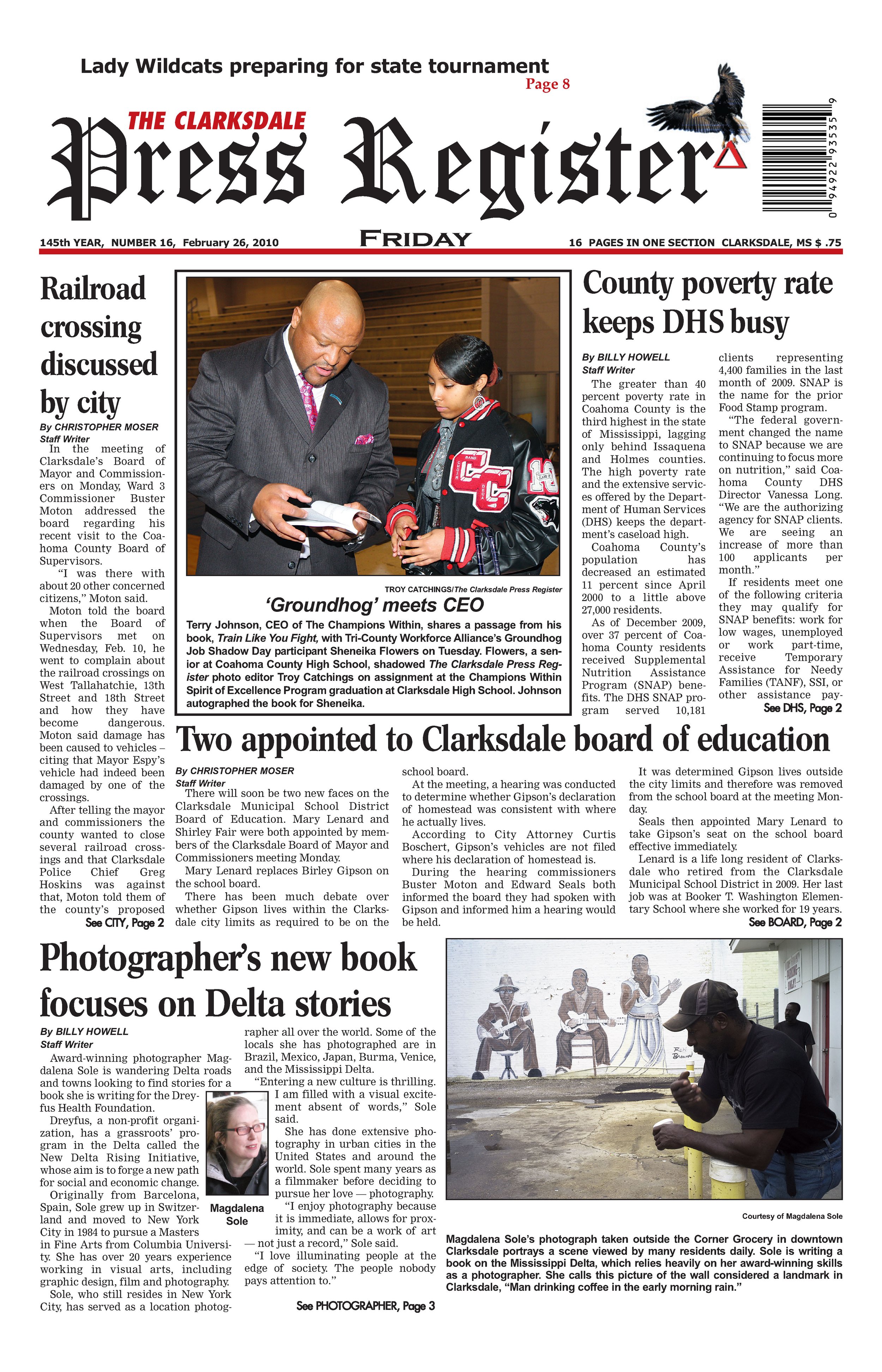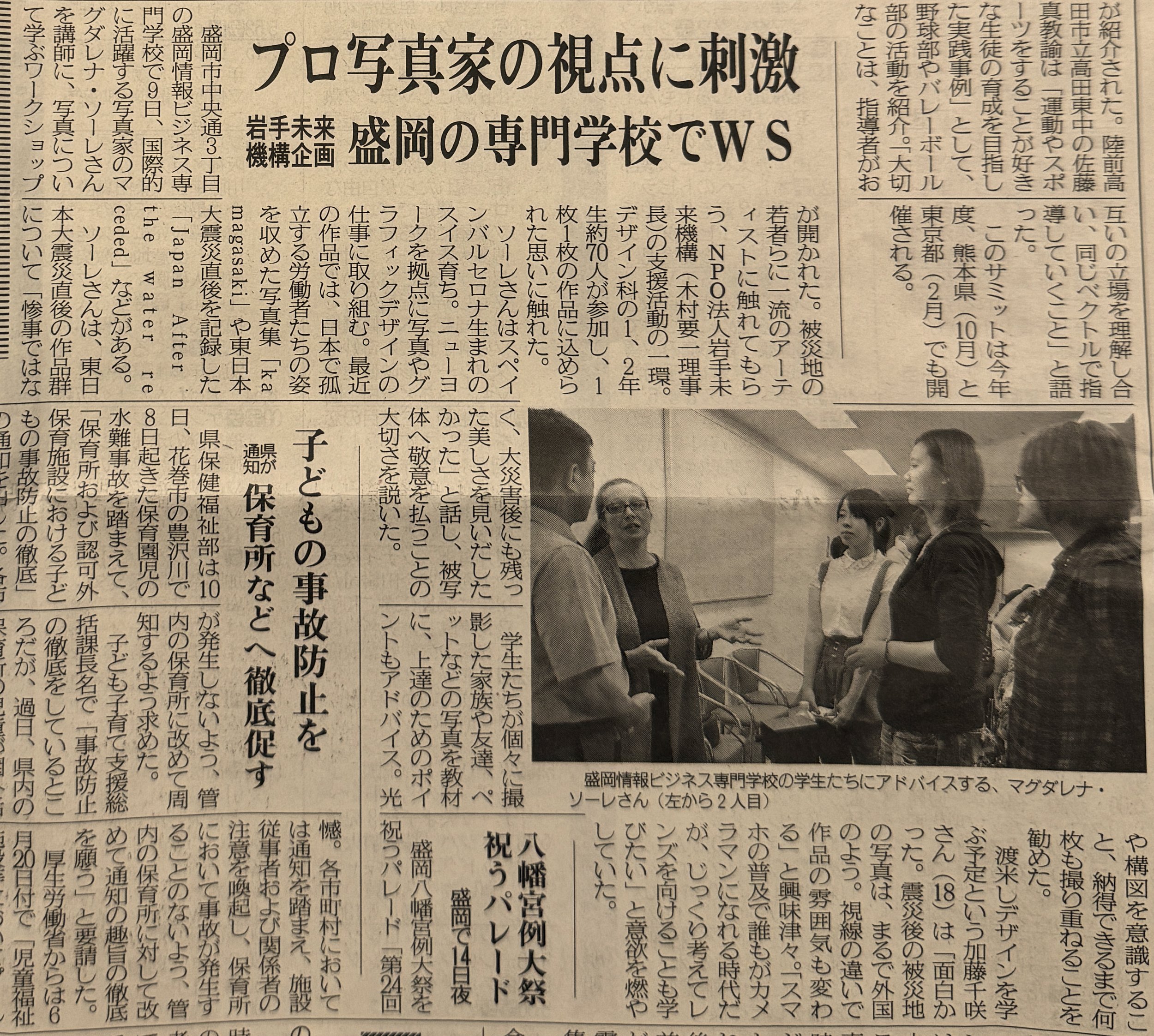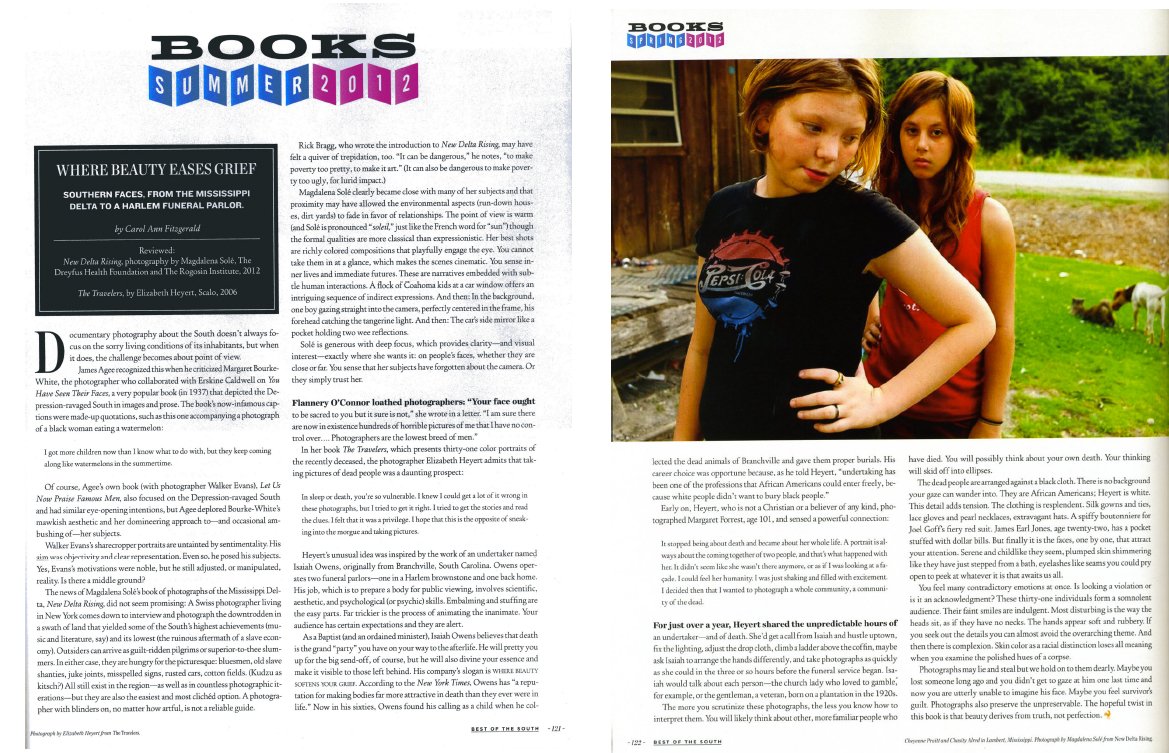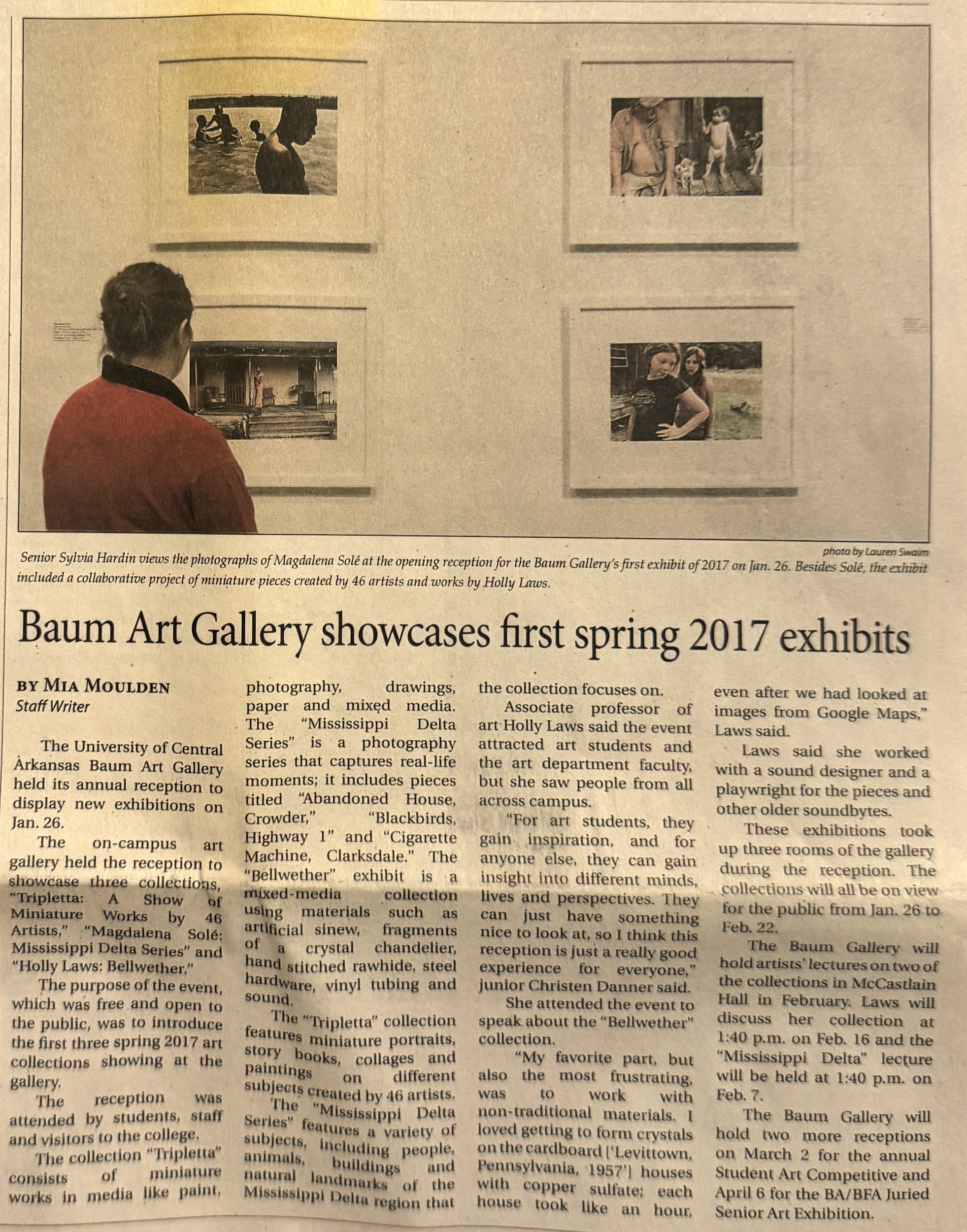Press
Photo-op: Delta Hues
By The Editors
The colors Ms. Solé finds everywhere in Clarksdale—the bright green walls of the Wangz and Thangz restaurant, the deep blue backgrounds of Messenger's Pool Hall, the red spotlight on the stage at Red's Lounge—are visual metaphors for the culture and history that remain vivid even beneath the cracking surface. Like Clarksdale's soundtrack, they electrify.
Photo shows at Griffin focus on Mississippi and books
By Mark Feeney
"Magdalena Solé’s 16 photographs are in color. With their juke joints and farmhouses they are unmistakably of the region, as Thibodeaux’s are. Throughout there is a sense of vibrancy and decay intermingled.
Solé’s most striking images differ from Thibodeaux’s in their painterly quality and occasional flirtation with abstraction. She has a fondness for blocks of solid color, as if Hans Hofmann had somehow wandered into this world and found it very much to his liking. Note the spattery blue background and red-orange chunk of fabric in “Girl Dancing.” These blocks bespeak a frequent unexpectedness in the pictures, as in the photograph of a decrepit blazer hanging on a rusty hanger in a space that’s at best the memory of a closet. Where Thibodeaux’s finest work strives for a monumental and universal quality, Solé’s seeks to surprise and intrigue."
Big picture: Ostrich, by Magdalena Solé
In ostrich on an abandoned Japanese street – what's the story?
It's a scene straight out of a post-apocalypse blockbuster: a lone ostrich trots down a deserted street, the pavements overgrown with weeds, an overturned car hinting at some recent catastrophe in a residential neighbourhood that's now eerily devoid of people.
People fled, leaving everything behind – not just because they were in a hurry to escape, but also because they believed their belongings had been contaminated. Farms were abandoned, their livestock – including ostriches (farmed for both meat and skin, which is used in leather products) – set free. When photographer Magdalena Solé visited the area last December, cows roamed the streets and pigs occupied houses, having broken in through fragile shoji screen windows and doors in search of food.
'New Delta Rising,' by Magdalena Solé
By Leah Latella
"Photographer Magdalena Solé tells the stories of hundreds of residents of this culturally rich land in her newest book, New Delta Rising . Within its pages are colorful and compelling images that capture the dignity, resilience, and resourcefulness of the Delta people, along with the closeness of family and community Solé found among them.”
Images That Speak
Just as stirring are Magdalena Solé’s prints from the region—they pop with color and visceral immediacy. “I don’t stage anything,” she said in an interview for the Leica Camera blog. “I just like the surprise of life as it is and how it reveals itself.”
Down South But Not Out
Hard times and warm hearts in the Mississippi Delta…
By Rob Wilkes
The people and places of the Mississippi Delta so completely captured the heart and imagination of documentary photographer Magdalena Solé on her first visit in 2009 that she felt compelled to revisit the region which she says has never left her. She’s quite a fan of the place.
However, this is not Paul Simon’s romanticised Mississippi Delta, shining like a national guitar, but a rather more careworn one in a second hand shop which still has a great warm tone when you give it a go. If The Mississippi Delta – New Delta Rising had a soundtrack, it would be the Blues, moaning of life’s hardships but never succumbing to them. An atmosphere of poverty pervades Solé’s images, but the humanity of her subjects is something that does shine like that famous guitar. Her work forms part of the spring exhibition at the Cassidy Bayou Gallery, Mississippi, and you can buy her book New Delta Rising through University Press of Mississippi.
In Documentary Profile Cuba: Magdalena Solé
By Jerry Atnip
"What inspires my pictures is light and the hidden spaces it illuminates, especially in immigrant and working-class communities. Places where beauty is found in displaced spirits and peeling paint. My photographs describe brief moments of human existence, carried by the rhythm of a setting. They convey what is at once simple and vast, passing and constant, ordinary and intangible."
Magdalena Solé
By Geoffrey Hiller in Italy.
"They told me the sad news that he [the barber in the picture] had suddenly passed away in 2010, just a few months after I took his picture. Barbiere Figaro has become an inspiration for my new project: “Barbers”, a visual journey through barbershops and their cultures around the world.”
Lauren Henkin: 3/3 Broadsides
By Aline Smithson
"Set 2 [of the broadsides], to be released in December 2013 pairs poet Katie Ford with photographer Magdalena Solé. Magdalena’s images in Set 2 were made just after the tsunami in Japan. Katie Ford has written about the aftermath of Hurricane Katrina.”
Cottonland - The Mississippi Delta by Magdalena Sole
By David Bram
“Solé says: Sometimes as a photographer you are lucky and make a friend here or there, but most often you arrive as an outsider, and that is how you leave. But the Delta refused to go along. I arrived as an outsider, but I was gradually so absorbed into the fabric of life there that I felt not like an outsider but rather like the family member who happened to have the camera."










